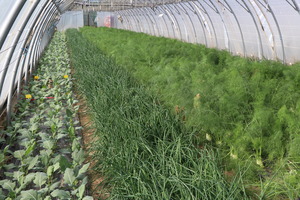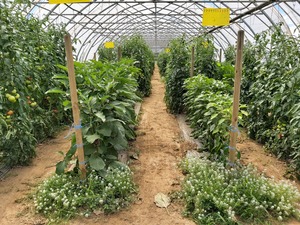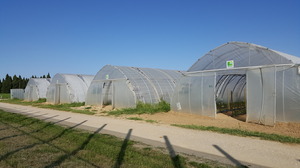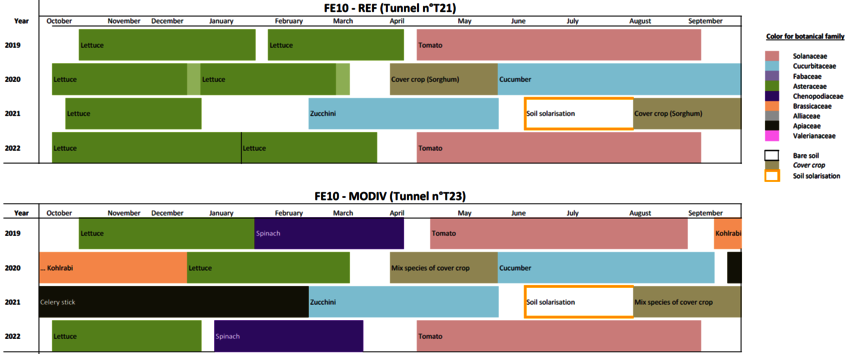Inspiring diversified systems for organic and fresh vegetables produced under shelters
Field experiment 10, France
Trial location and duration
Location: France, Alénya (42,63765°N, 2,971884°E; 8,7m alt.) INRAE Agroecological vegetable systems experimental facility
Trial duration: October 2018 to September 2022.
Objectives and research question
At the field scale, crop diversification is a strategic practice to combine with other agroecological practices. Growing two or more cash crops on the same land in the same year is typical of market gardening systems, especially under shelters in the Mediterranean context. However, even though vegetable farms may be diverse, at field level crop sequences can have little diversity and few periods with cover crops. Intercropping and mixtures of species in cover or cash crops are seldom implemented.
We hypothesized that introducing a higher level of diversification in time and space at the field level is useful to sustain production and to mitigate risks associated with climate, pest and disease, and economics. We also hypothesized that it can prevent soil degradation and limit pest and disease damage on crops. Our experiment aims to design, assess and bring actionable knowledge on three different pathways for implementing diversification compared to a poorly diversified system focused on lettuce production.
Experimental design
The low-diversity reference system (figure 4) was compared to three diversified systems: MODIV (figure 4) is a medium diversified system with a more diversified crop sequence than the reference (REF). The DIVBANDE and DIVMIX (figure 5) systems are highly diversified with long crop rotations and with continuous intercropping of 3 species under the tunnel. DIVBANDE uses strip intercropping where strips can be independently managed from one to the other. DIVMIX was inspired by mixed intercropping, organising plants into small patches in the vicinity of other plants while relying on common crop management for the 3 species. All four systems were under organic management from October 2018 to September 2022 in loamy-sandy soil. Each system was implemented under only one 400m² unheated plastic walk-in tunnel.
Main findings and highlights
- Diversified systems resulted in satisfying marketable yields for the majority of crops
- Reducing the range of pest-sensitive crops makes it easier to reduce protection products applied
- The way intercropped species are arranged in space and time has a strong impact on labour requirements
- Crop management practices have to be adapted and compromises are needed in order to optimise management of all three intercropped species
- Some intercropping designs tested are promising for farms that engage in direct sales.
Main challenges
- Introducing fabaceous cash crops other than solanaceous and cucurbits to expand the range of summer crops
- Introducing new crops, or those that are not well known, presents new challenges in terms of production, but also in terms of packaging and selling products
- Designing an intercrop with 3 species that are mutually compatible under shelter
- Finding the right mix of cover crops according to the period available and time of sowing





 toccare e scorrere fino al comando Aggiungi alla schermata iniziale.
toccare e scorrere fino al comando Aggiungi alla schermata iniziale.